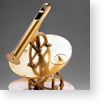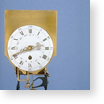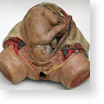When Gian Gastone de' Medici died in 1737, the Habsburg-Lorraine family became the sovereigns of Tuscany. At the initiative of Grand Duke Peter Leopold (1747-1792), the scientific collections were rearranged. Starting in 1769, they were moved from the Uffizi Gallery to the Imperial and Royal Museum of Physics and Natural History near Palazzo Pitti, inaugurated in 1775 under the direction of Felice Fontana (1730-1805). To the original Medicean core collection were added, over the years, apparatus built in the Museum's workshops, such as dividing machines, various instruments used in physics, wax anatomical models, workbenches and cabinets, as well as precision instruments imported from abroad. Some of these objects can be seen here, in the original display cases of the Physics Museum. The Museum also had an astronomical observatory, directed at one time by the renowned astronomer and optician Giovanni Battista Amici (1786-1863). In 1841, under the direction of Vincenzo Antinori, the most ancient part of the collection was placed in the Galileo Tribune. The collection continued to grow until 1859, when the last Grand Duke of the Lorraine dynasty, Leopold II, left Tuscany, never to return.
Physics and Optics Instrumentation
The Museum cabinet of physics was constantly updated with mechanical and pneumatical apparatus, electrostatic machines and measuring devices. Numerous ...
(31 objects)
Meteorology and the Museum Workshops
The Museum of Physics and Natural History devoted major resources to research in meteorology and its instruments. In 1839 the Director, Vincenzo Antinori ...
(6 objects)
Peter Leopold’s Chemistry Cabinet
The so-called "chemistry cabinet" formed part of the private laboratory ordered by the Grand Duke, who left it to the Museum of Physics and Natural History ...
(1 objects)
Medical science
The Lorraines' interest in medicine is documented by some exceptional artifacts, of which a selection is on display. The 40 clay obstetrical models were ...













